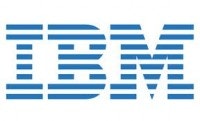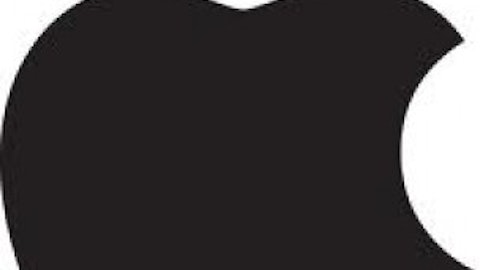
The good – software and services
IBM’s software group and global business services pipelines grew by over $2 billion this quarter, while revenue was up 5% and 2%, respectively, in the groups. Key branded middleware was up 10% to account for 67% of total software sales. IBM’s service backlog grew at 7% this year, giving the company more stable and predictable earnings into the future.
International Business Machines Corp. (NYSE:IBM) acquired Softlayer to continue to grow revenue with the “big data” trend, and companies transitioning to cloud computing. Softlayer will allow IBM to be more flexible with its customer offerings to provide higher value, and more cross-selling of products.
The bad – hardware
IBM’s hardware segment was down a disappointing 2% in revenue this quarter. It is facing a systemic slowdown in hardware upgrades, and longer renewal cycles for existing products. International Business Machines Corp. (NYSE:IBM) is expecting low single-digit growth in the second half of the year, and has mentioned a divestiture that didn’t materialize several times on the call. The divestiture could be the rumored sale of the company’s low-end server business to Lenovo that had been brought up on its 1Q call.
Everybody knows the hardships that Hewlett-Packard Company (NYSE:HPQ) is facing in the PC market. Global PC sales are hitting another snag this year, with a nearly 20% reduction in year-over-year in sales. Chief executive officer Meg Whitman has been trying to turn the tech behemoth around by mimicking IBM. The company is now trying to move into the server segment as well as consulting services.
Hewlett-Packard Company (NYSE:HPQ) currently has a gross margin of 7.2% versus IBM’s 21%. HP currently pays out 40% of its earnings to support a 2.2% dividend. The company just raised its dividend 10% for next quarter, which is often a good sign, but HP is battling a deteriorating market with PC’s. We will have to wait and see if HP can find enough efficiencies in its operations to support such dividend increases.
Hewlett-Packard Company (NYSE:HPQ) is trying to move away from the declining PC business, and into software licensing and consulting. The problem with this strategy is that it is dominated by IBM and Oracle Corporation (NYSE:ORCL). Both of these companies have long-term contracts with their clients, and HP will have to drastically undercut those two giants, eroding its own margins in the process. The first-mover advantage in corporate software continues to benefit International Business Machines Corp. (NYSE:IBM) and Oracle Corporation (NYSE:ORCL). There is still a lot of unknowns for HP, Whitman certainly has her work cut out for her.
Share repurchases
IBM’s share-repurchase program has reduced Big Blue’s share count down by 4% year-over-year. In the most recent quarter, share repurchases boosted International Business Machines Corp. (NYSE:IBM)’s earnings by $0.18 and helped it achieve a $16.90 EPS run rate for 2013. IBM stated that it expects to earn $20 per share by the end of 2015, and even with some headwinds, it looks like the company is going to make it.
In its most recent quarter, AT&T Inc. (NYSE:T) repurchased over 300 million shares, or 4% of its stock outstanding. The telecom giant will now save over $150 million per quarter by not paying out a dividend on those retired shares. This is AT&T’s strategy to juice earnings as last year was an expensive year for funding pensions.
AT&T Inc. (NYSE:T) is able to borrow money at 3% and repurchase its shares that 5%. This means that AT&T is now saving the 2% difference between the 3% it is now paying on bonds and the 5% that it was paying for the dividend. Ma Bell was truly taking advantage of this lower interest-rate environment.
AT&T Inc. (NYSE:T)’s wireless and wire-line businesses recently grew at 5.7% and 2.4%, respectively. This gave Ma Bell more free cash flow to reward shareholders with. AT&T’s net margin of 9.5% allows AT&T to pay out 60% of its free cash flow in the form of a 5.1% dividend. This is a conservative income investor’s dream stock. Going forward, share repurchases will continue to be big drivers for increases in earnings at both AT&T and IBM. This effect will, however, start to slow down once interest rates start rising and cheap money becomes harder to find.
Re-balancing
International Business Machines Corp. (NYSE:IBM) spent $1 billion this quarter buying out employees to reduce expenses going forward. The company plans on driving more of these efficiencies going forward to contain expenses year-to-year.
Last year, HP laid off nearly 20,000 employees in an effort to reduce reoccurring expenses in lower-performing divisions. These expense reductions will help the company going forward, but you can’t cut your way to revenue growth.
Divestitures were another hot topic on IBM’s call this quarter. Low-end servers were rumored to be sold to Lenovo, the Chinese company that purchased the IBM ThinkPad notebook division in 2005. This would make Lenovo a stronger competitor to HP and give Whitman’s company an even greater hurdle to become profitable by switching to servers and software.
IBM does have the advantage of having a non-unionized staff. AT&T, on the other hand, has grappled with keeping the current pension obligations funded in this low interest rate environment. Going forward, companies from the old guard that have long-term inflexible contracts will find it harder to compete against their more nimble new start-up competitors.
The bottom line
IBM was able to repurchase over 4% of its shares outstanding this year. The company’s move to higher-margin products reduces the amount of revenue IBM has to bring in to maintain profit growth. The company is still in the process of shifting to software and services, but as we saw last week, International Business Machines Corp. (NYSE:IBM) is still susceptible to stumble over its hardware divisions.
AT&T is a stalwart of the economy and has set itself up to be a continued strong competitor in the telecom space, while paying dividend investors a juicy 5.1% yield. HP, on the other hand, still has to prove that it is not going to be dependent on its hardware division forever. HP’s execution on a move into software and services could be short lived if Lenovo jumps in and starts to under cut server prices, like it did with laptops. The ground is still shaky with HP, and I would avoid it.
The article How Is Big Blue Stacking Up? originally appeared on Fool.com and is written by Wes Patoka.
Wes Patoka owns shares of International Business Machines and AT&T. The Motley Fool owns shares of International Business Machines. Wes is a member of The Motley Fool Blog Network — entries represent the personal opinion of the blogger and are not formally edited.
Copyright © 1995 – 2013 The Motley Fool, LLC. All rights reserved. The Motley Fool has a disclosure policy.





